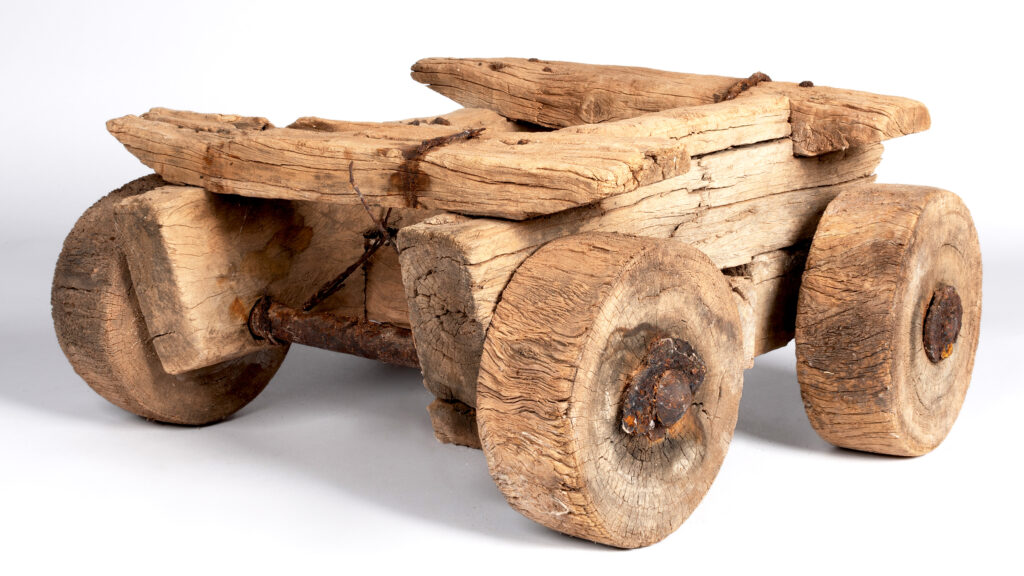
Used at the Lightning Ridge opal fields on Yuwaalaraay Country, this handmade mining trolley is testament to the back breaking work and inventive spirit the manual mining era is remembered for. Its wooden parts were made using local, termite-resistant white cypress pine, held together using butt and lap joints, nails and wire. The wheels were […]
Read More…
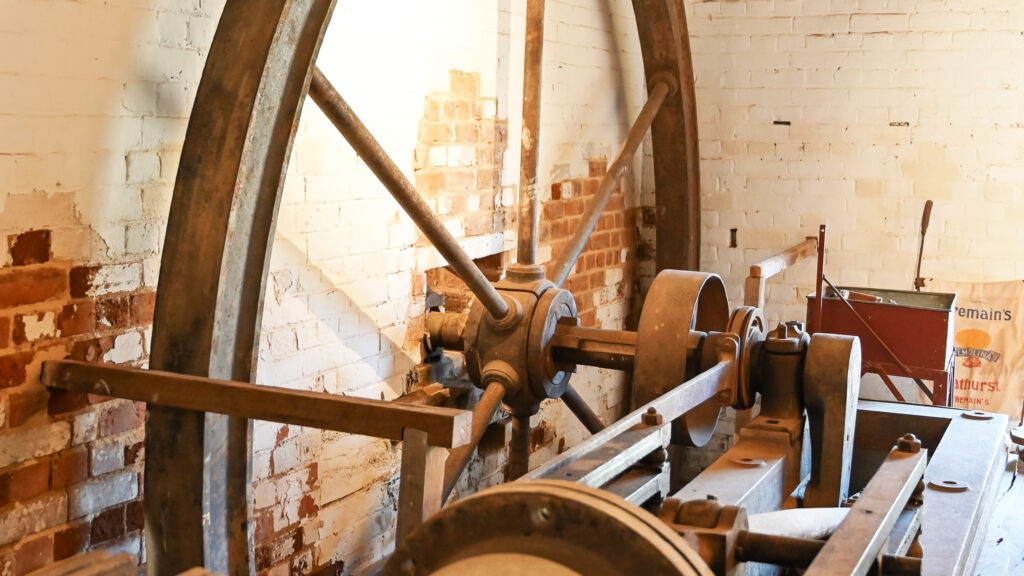
Although this engine generated less output than a modern ride-on mower, its life story reveals part of the agricultural, industrial and mining history of Rockley. The engine was installed in the western end of J.C. Stanger’s newly built flour mill in Rockley which started operation in 1862. This engine was powered by steam generated by […]
Read More…
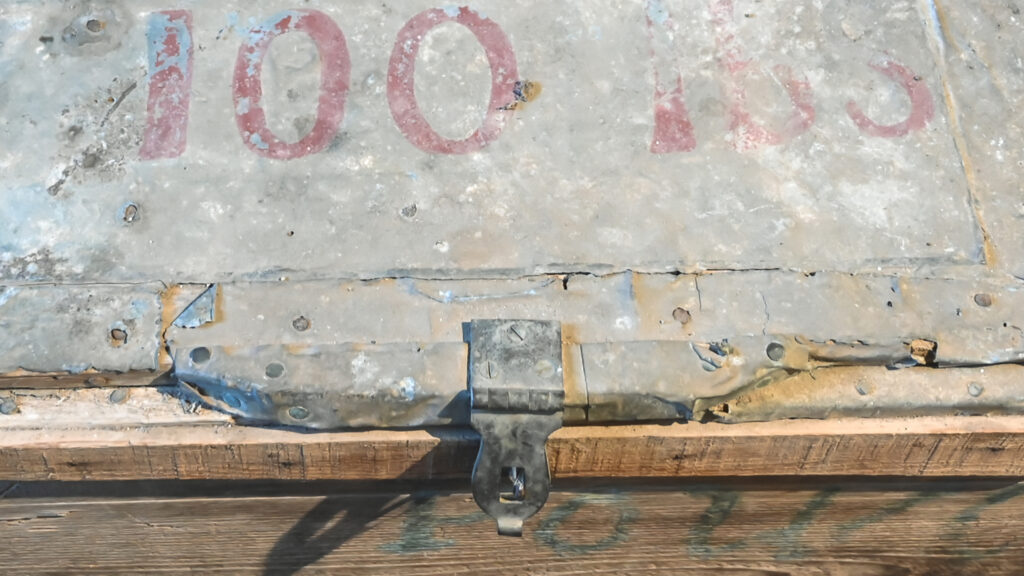
Browsing through nineteenth century newspapers and looking at this wooden box for storing dynamite, you may think that explosives were not handled with the care they demand. However, you would be mistaken. Outside of underground mining, most accidents were due to carelessness or misuse. The invention of dynamite by Alfred Nobel in 1871 changed the […]
Read More…
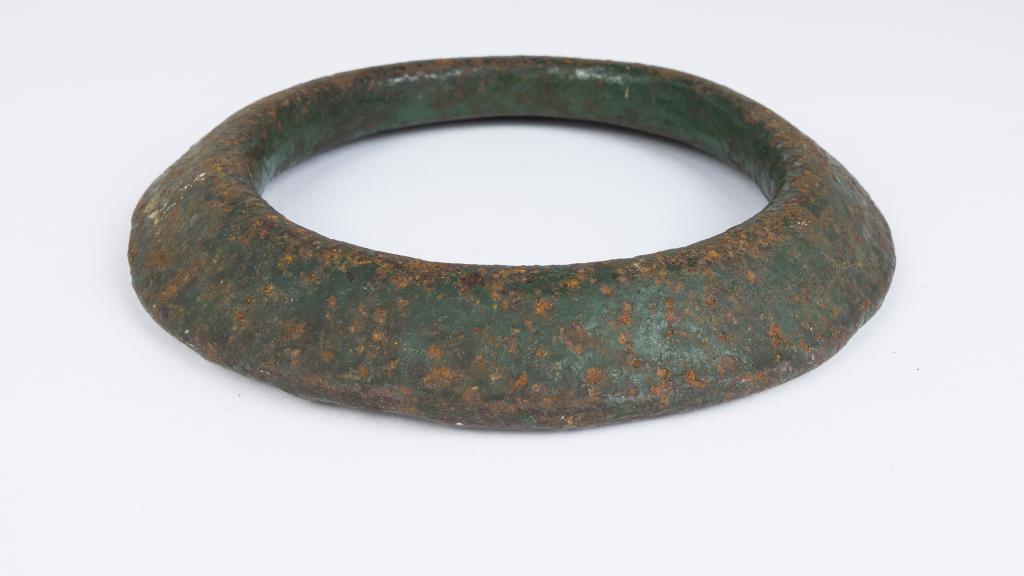
Although this object may look like a giant’s bangle it is in fact an integral part of the mostly forgotten game of clay–end quoits which dates back to the 14th century and was most closely associated with mining regions. The game involved the throwing of metal rings, the quoits, up and down a pitch with […]
Read More…
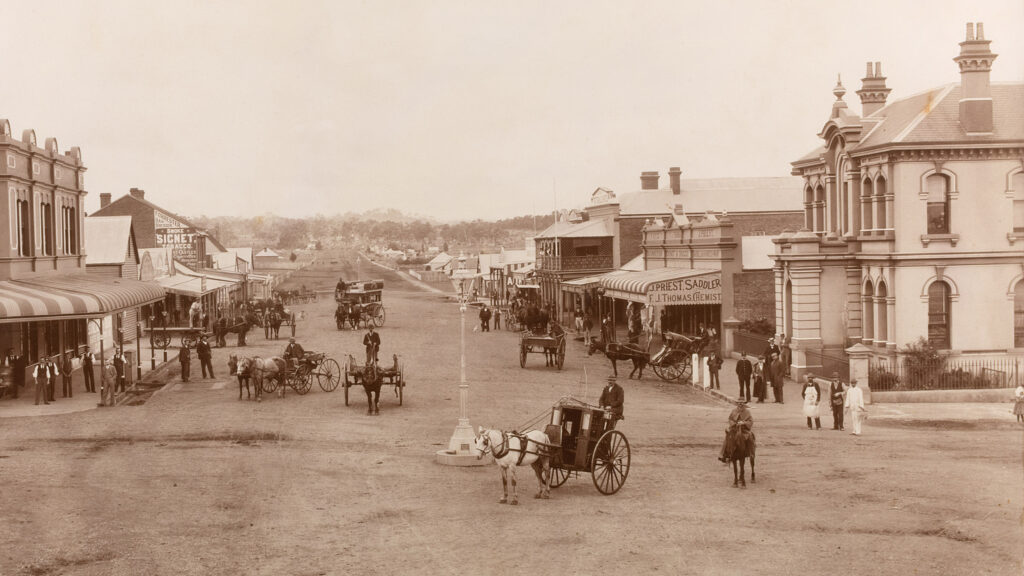
Once a ‘sleepy hollow’, Glen Innes in northern NSW became a ‘scene of unparalleled excitement’ when tin was discovered in the district in the 1870s. There was a huge influx of miners and ‘hotels were thronged with eager and excited visitors from all parts of the world.’ ‘Shops of all descriptions sprang into existence.’ As […]
Read More…
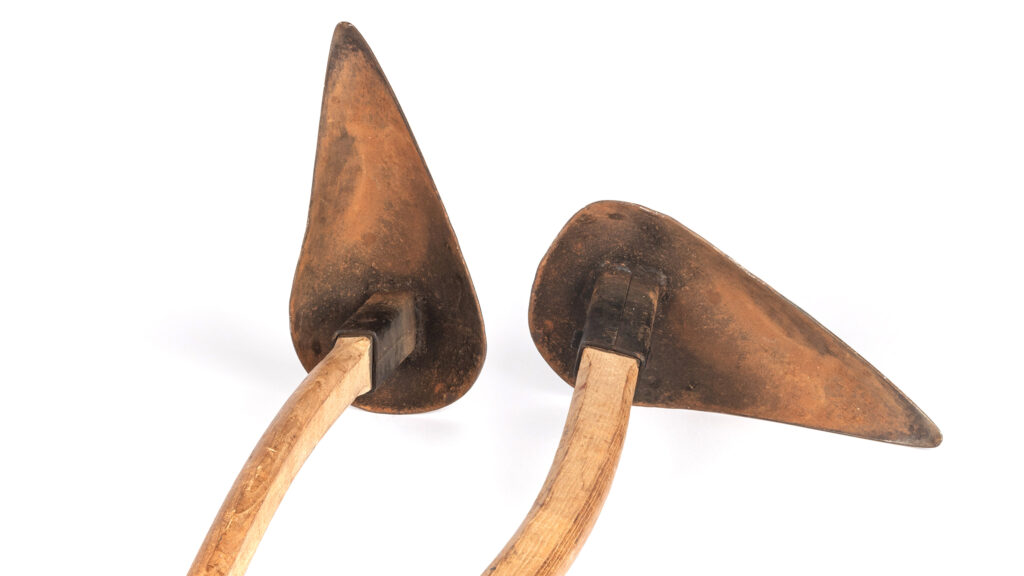
What do wild black panthers and pretty sapphires have in common? This pelican pick! In 1872, some local miners discovered tin in the Glen Innes Highlands area, on Ngoorabul country in rural NSW. Being on top of one of the world’s richest mineral belts, other resources including arsenic and precious stones like sapphires, emeralds and […]
Read More…
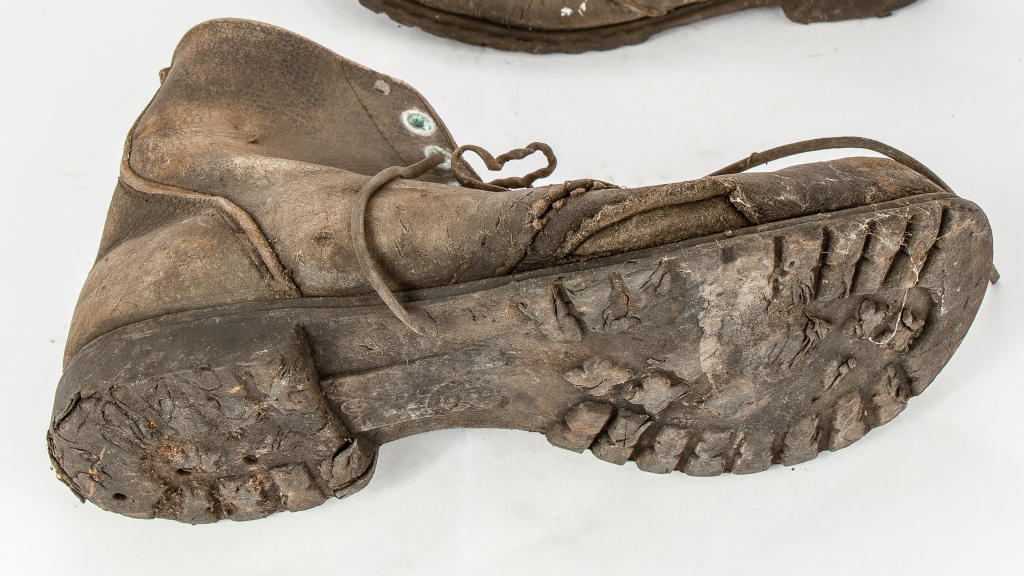
Leather worn through at the toes, broken laces, and soles coming apart. These boots were worn to the bitter end and seemed to serve their wearer well. But were they fit for purpose? Worn by a miner at the Stockton Borehole Colliery, at Teralba, Lake Macquarie, where coal was mined from 1901, boots like these […]
Read More…
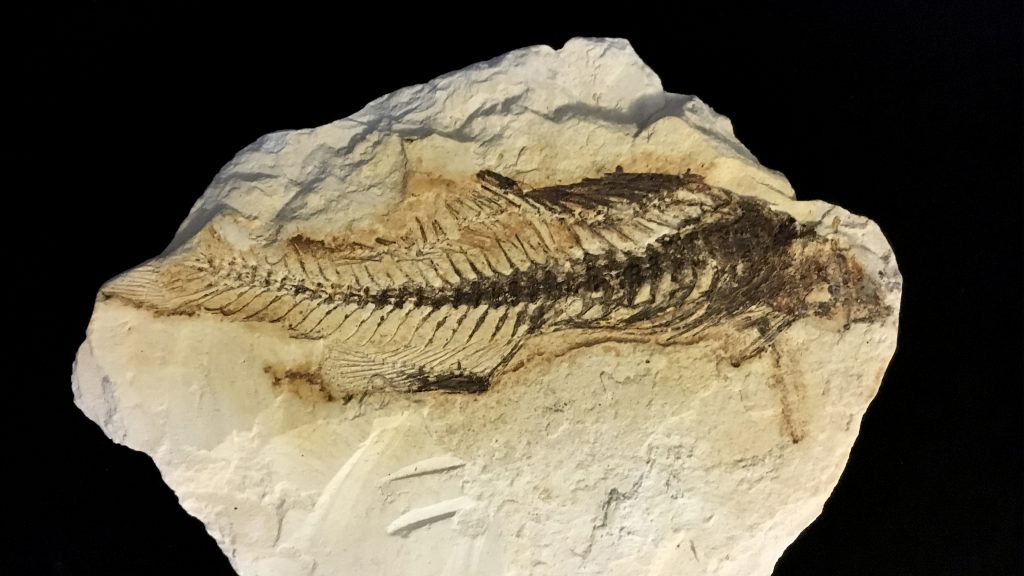
As a young child approaching my grandparent’s farm out beyond Bugaldie, north-west of Coonabarabran, I used to stare out the car window. After many hours on the road, mesmerised by hours of endless gum trees, the Warrumbungle Mountains finally appeared. As we drove along the flat plain near the railway siding of Bugaldie, my mother […]
Read More…
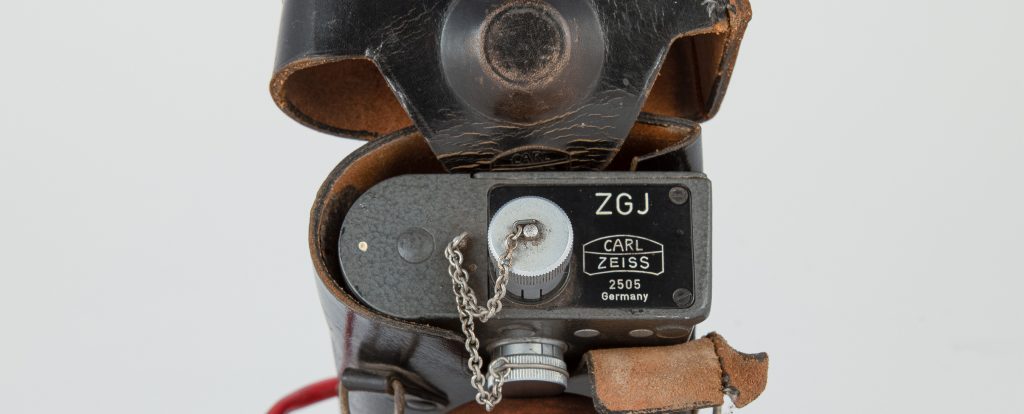
The proverb ‘necessity is the mother of invention’ is possibly never more apt than when applied to the portable mine gas detector. Throughout mining history, countless miners have lost their lives in explosions caused by the inflammable methane gas that accumulates underground through the transformation of ancient plant material into coal. But from the 1950s, […]
Read More…
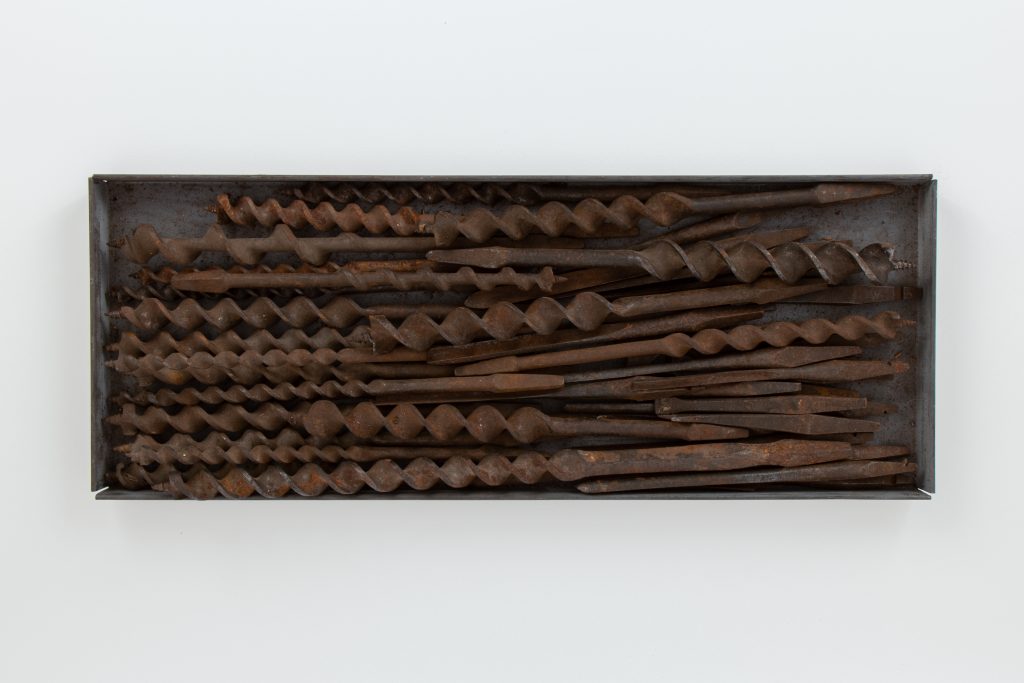
At this point, the history of Newcastle, located on Awabakal and Worimi country, is enmeshed with coal mining – but this was not always the case. Though these twentieth-century drills bits may have seen use in one of the many coal mines in the region, they are actually typical of those used for woodworking or […]
Read More…











